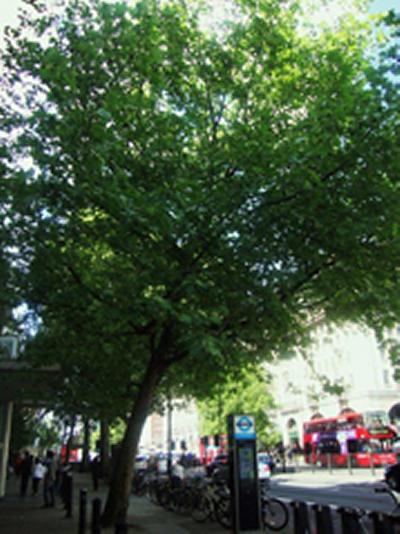New study shows how trees clean the air in London
New research by scientists at the University of Southampton has shown how London’s trees can improve air quality by filtering out pollution particulates, which are damaging to human health.
A paper published this month in the journal ‘Landscape and Urban Planning’ indicates that the urban trees of the Greater London Authority (GLA) area remove somewhere between 850 and 2000 tonnes of particulate pollution (PM10) from the air every year.
An important development in this research, carried out by Dr Matthew Tallis, is that the methodology allows the prediction of how much pollution will be removed in the future as the climate and pollution emissions change. This shows the real benefits of the planned increase in the number of street trees in London and throughout England, including the GLA’s plan to increase the area of urban trees by 2050 and the current government’s ‘Big tree plant’ initiative.
The research found that the targeting of tree planting in the most polluted areas of the GLA area and particularly the use of a mixture of trees, including evergreens such as pines and evergreen oak, would have the greatest benefit to future air quality in terms of PM10 removal.
One of the paper’s authors Professor Gail Taylor explains: “Trees have evolved to remove CO2 from the atmosphere, so it’s not surprising that they are also good at removing pollutants. Trees which have leaves the whole year are exposed to more pollution and so they take up more. Using a number of different tree species and modelling approaches, the effectiveness of the tree canopy for clean air can be optimised.”
This study presents predictions of particulate (PM10) uptake in future climate and for five tree planting scenarios in London. Using seasonal rather than hourly data was shown to have little impact on modelled annual deposition of pollution (PM10) to urban canopies, suggesting that pollution uptake can be estimated in other cities and for the future where hourly data are not available.
Co-author Peter Freer-Smith, Chief Scientist for Forest Research (Forestry Commission) and visiting professor at the University of Southampton, says: “We know that particulates can damage human health, for example exacerbating asthma and this reduction in exposure could have real benefits in some places, such as around the edge of school playgrounds. Urban greenspace and trees give a wide range of benefits and this study confirms that improving air quality is one of them and will also help us to get the most out of this benefit in future.”
This work is part of the wider EU BRIDGE (sustainaBle uRban plannIng Decision support accountinG for urban mEtabilism) project on planning sustainable cities.
Related Staff Member
Related Staff Member
